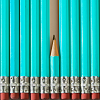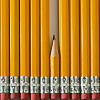Or search by topic
Number and algebra
Geometry and measure
Probability and statistics
Working mathematically
Advanced mathematics
For younger learners
All in a Jumble



- Problem
- Getting Started
- Student Solutions
- Teachers' Resources
Why do this problem?
The problem presents many different quantities and units. It involves thinking about large and small numbers and 'back of an envelope' estimations and unit conversions. It offers an ideal opportunity for class discussion and convincing arguments.
Possible approach
Ask students to work in pairs, so they must discuss and convince each other. Students could write how many they get correct each time they check. With some classes, it may be appropriate to encourage students to write out their estimating processes and unit conversions, in their exercise books. Students could also record useful numerical facts.
The following sets of cards are available if you want students to work away from the computer.
Card Set 1
Card Set 2
Card Set 3
There is also an answer sheet available.
Key questions
Which of the units could be used here?
Which of the items are easiest/hardest?
What do you know that is relevant here?
Possible support
Print a few copies of the card sets and ask students to identify all the items on one sheet which measure length, say. They could delete all other items and all inappropriate units. In small groups, ask students to estimate the different lengths in any units of their choice, and convert these estimates to other sensible units. Based on this working, ask them to match up item, number and unit for all the lengths. Then they can do the same with mass, capacity and so on.
Possible extension
A Question of Scale explores ordering quantities with different orders of magnitude.
You may also like
Squaring the Circle
Bluey-green, white and transparent squares with a few odd bits of shapes around the perimeter. But, how many squares are there of each type in the complete circle? Study the picture and make an estimate.



